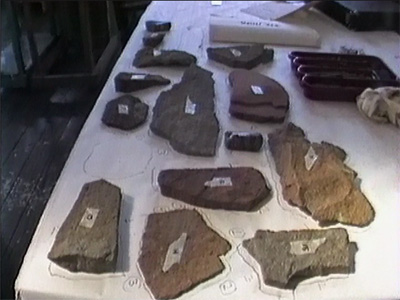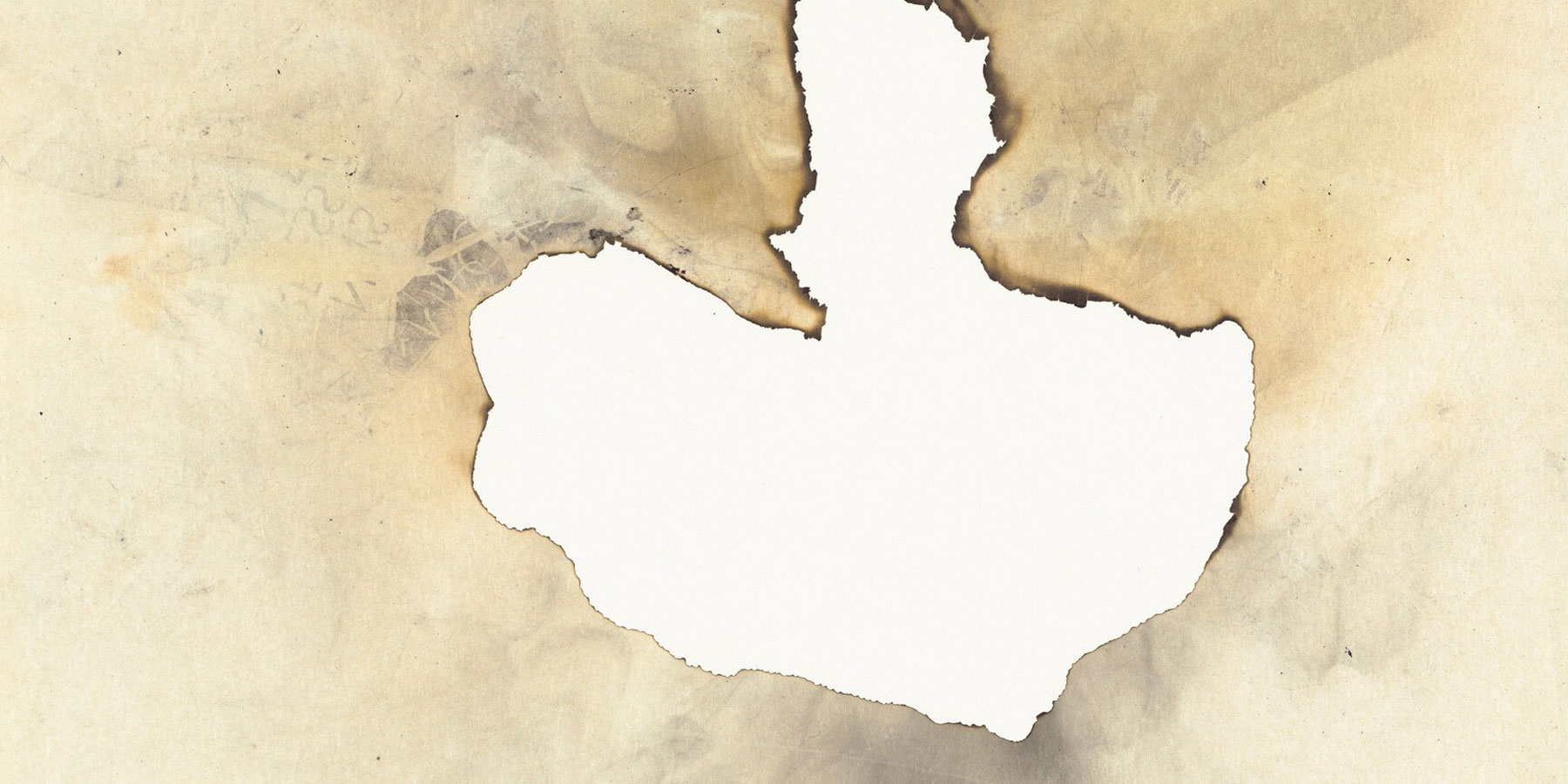Banner image: Detail, John Cage, Eninka 29, 1986, burned, smoked, and branded gampi mounted to paper, National Gallery of Art, Washington, Gift of Crown Point Press, 1996, © John Cage Trust
John Cage, 75 Stones, 1989
This print represents a shift in Cage’s method. Having previously relied on chance to make color selections, he composed a palette based on the color of the stones used to make the print. Also, he traced the stones freely with brushes, a technique he had avoided earlier. He did not completely abandon chance: the rocks were selected and positioned using chance calculations. In homage to the fifteen stones in the Zen rock garden at Ryoanji, he began with fifteen stones, which he traced. He made a test print and then, working in increments of fifteen stones, he added rock tracings and made further proofs (in the collection of the Fine Arts Museums of San Francisco). Cage concluded, based on aesthetics alone, that tracing seventy-five stones was just right.

Cage's rocks, selected by chance operations for use in 75 Stones, 1989. Still image from John Cage at Work, 1978–1992, a film in four parts by Kathan Brown, 2013, Courtesy Crown Point Press
"Yes, No, Maybe: The Art of Making
Decisions," lecture by exhibition curators Judith Brodie and Adam Greenhalgh (audio)
Julie Mehretu, artist, in conversation with curator Judith Brodie, Diamonstein-Spielvogel lecture (audio)
"An Insider's Perspective," lecture by Kathan Brown, founder of Crown Point Press (audio)
Exhibition tour by curators Judith Brodie and Adam Greenhalgh (audio)

